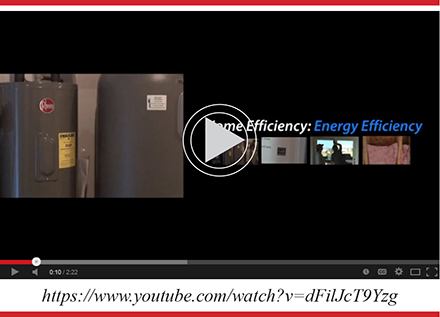G2235
Home Efficiency: Energy Efficiency
Energy efficiency improvements often pay for themselves through reduced energy bills. This publication describes several methods you can use to calculate the potential savings.
F. John Hay, Extension Educator – Energy
Lynn Chamberlin, Nebraska Energy Office
Understanding Energy Efficiency Improvement Calculations
People considering investing in energy efficiency improvements in their homes expect the investment to lower energy bills, so it is only natural for them to ask whether an improvement is a good investment. It’s a simple question that often leads to additional, more complex questions and considerations.
- How long do they expect to live in the home?
Most people are more likely to invest in home energy improvements if they plan to stay in their home for a long time.
- Do they anticipate future energy increases?
If the cost of energy rises, home energy improvements prove to be a better investment.
- What is the life expectancy of the improvement they are contemplating?
Improvements with a long life, like attic insulation, are generally a better investment than the purchase of equipment like a new water heater with a shorter life span.
- Will the improvement increase the value of the home?
- Are there maintenance costs associated with the improvement?
- Do they value the environmental benefits associated with reduced energy use, even if the cost of achieving that goal is high?
- Do they value the comfort improvement that often accompanies energy efficiency improvements?
Some of the answers to these questions are quantifiable, others can be estimated, and some can’t be quantified at all — all of which adds to the confusion and misunderstandings often associated with calculating the savings that can be associated with energy efficiency improvements.
First, any large energy efficiency improvement(s) or weatherization project(s) should begin with an energy audit. Most energy audits are designed to help determine which improvements make economic sense and which don’t. A well-done audit can accurately predict which home improvements will create an energy savings and what amount of savings can be achieved. Deciding what energy efficiency improvements to make is most easily done based on the results of an accurate audit. Contact your local utility for energy audit options.
Investment Options
Once you have a listing of possible energy efficiency improvements, the estimated cost to complete the work, and the estimated energy cost savings, you will be ready to consider investment options:
Simple Payback
A simple payback calculation is based on the dollars saved on utility bills and the length of time it takes to recover the cost of making the energy saving improvements. For example: Suppose that it takes $695 to insulate your home’s attic and it will save $358 a year in energy costs (roughly $30 per month). Dividing the improvement cost by the monthly utility savings ($695 ÷ $30) indicates the cost of insulation will be recovered in 23.17 months, a little less than two years. After that, the $30 a month is money in your pocket.
Cash Flow Analysis
If you are borrowing the money to pay for the energy efficiency improvements, a cash flow analysis probably makes more sense than a simple payback calculation, and it can be completed fairly easily with an interest calculator.
A cash flow analysis can be used if making improvements to your existing home or for considering whether to include energy improvements in a new home. For example, you are considering installing a $5,000 efficiency upgrade into a new home and rolling the cost into your mortgage. Since you know your mortgage interest rate and term, it’s fairly easy to calculate the annual cost to borrow $5,000. If it’s a 20-year mortgage at 5 percent interest, the cost to borrow $5,000 is $33.00 per month, or $396 per year. If the $5,000 improvement saves you only $350 per year on your energy bill, then borrowing money to pay for the improvement doesn’t work out on a cash-flow basis. But if the $5,000 improvement saves you at least $397 a year on your energy bills, then the improvement is “cash flow positive” from day one. If the cost of energy increases, your cash flow position improves. Other factors can be integrated into a cash flow analysis including inflation considerations and future maintenance costs.
Net Present Value
Unlike simple payback and cash flow analysis, net present value takes into account the fact that the value of money changes with time — $10 today won’t be worth $10 five years from now. To compare cash flows that occur in different years, you discount the cash flows for each year of the life of the improvement. When all of the cash flows have been discounted, you total the discounted values and determine the net present value of the improvement. If the net present value is greater than zero, the proposed investment would be considered profitable. One of the problems with net present value calculations is that we don’t really know what the discount rate should be over time, since it’s hard to anticipate future inflation or future interest rates. Like many other factors, the discount rate is basically a guess.
Return on Investment
To determine a project’s return on investment, calculate the annual net cash flow, which is the sum of the present values of the anticipated cash flows divided by the number of years under consideration. Once you know the return on investment for a proposed energy improvement, you can compare the investment with a more conventional investment vehicle such as an investment in U.S. government bonds. However, you do have to keep in mind, a typical cash investment doesn’t have a limited life span or annual maintenance cost like some energy efficiency investments can.
This publication has been peer reviewed.
Visit the University of Nebraska–Lincoln Extension Publications website for more publications.
Index: Consumer Education
Energy Conservation
Issued April 2014
